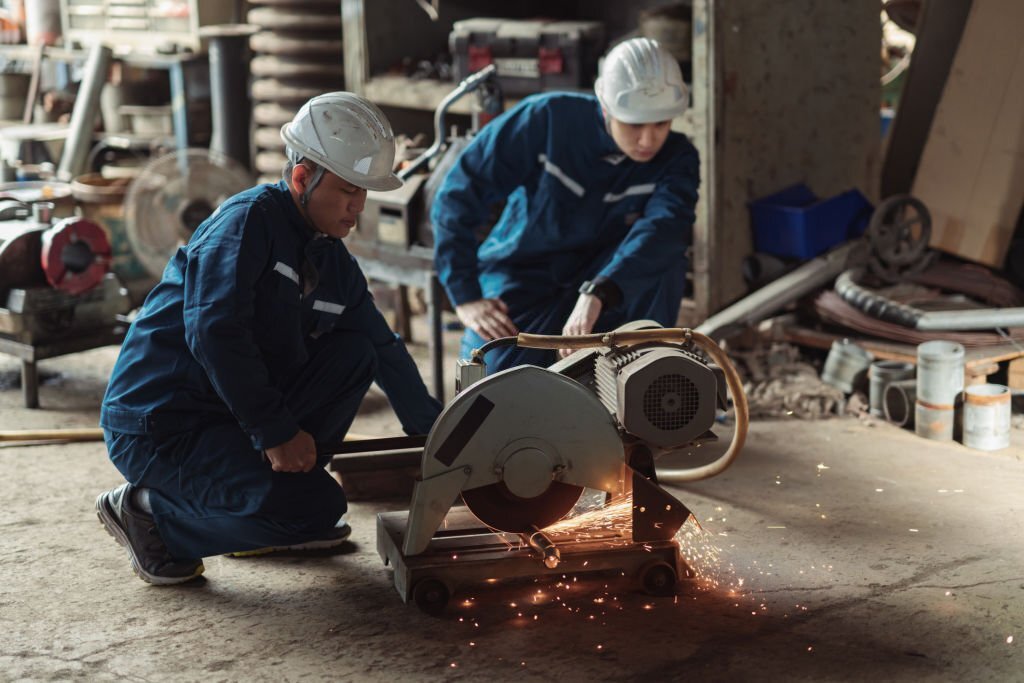
Workplace ergonomics plays a crucial role in ensuring the health, safety, and productivity of workers. When it comes to material handling operations, the design and use of appropriate equipment are essential for promoting ergonomic principles and creating a safe and efficient work environment. Material handling equipment that is ergonomically designed can significantly impact worker well-being and overall operational effectiveness.
In this article, we explore the influence of material handling equipment on workplace ergonomics. We discuss the importance of ergonomic design in equipment, the benefits it offers, and its impact on worker safety, reducing musculoskeletal disorders, and improving productivity. By understanding the significance of ergonomic material handling equipment, businesses can prioritize worker well-being, minimize workplace injuries, and optimize operational efficiency.
Importance of Ergonomic Design (approx. 400 words)
Ergonomic design in material handling equipment is crucial for several reasons. Consider the following aspects:
1.1 Worker Safety Ergonomic design focuses on minimizing the risk of workplace injuries and accidents. Material handling equipment that incorporates ergonomic principles, such as adjustable controls, proper visibility, and operator-friendly interfaces, reduces the likelihood of strains, sprains, falls, and other work-related incidents.
1.2 Musculoskeletal Disorder Prevention Ergonomic design in material handling equipment aims to reduce the physical stress and strain on workers’ bodies. Properly designed equipment, including adjustable workstations, ergonomic seating, and lift-assist devices, helps minimize the risk of musculoskeletal disorders (MSDs) caused by repetitive movements, awkward postures, or heavy lifting.
1.3 Worker Comfort and Satisfaction Ergonomically designed material handling equipment enhances worker comfort and satisfaction. Equipment that takes into account factors such as proper weight distribution, reduced vibration, and user-friendly controls promotes a more comfortable and enjoyable work experience. This, in turn, contributes to higher worker morale, engagement, and overall job satisfaction.
2. Worker Safety and Injury Prevention
Material handling equipment with ergonomic design features significantly improves worker safety and prevents injuries. Consider the following aspects:
2.1 Proper Lifting and Handling Techniques Ergonomic equipment, such as lift-assist devices, reduces the physical strain associated with manual lifting and handling of heavy objects. It promotes proper lifting techniques, incorporates safety features like handholds and grip surfaces, and provides support to workers, minimizing the risk of strains, sprains, and back injuries.
2.2 Enhanced Operator Visibility Ergonomically designed equipment ensures optimal visibility for operators, reducing the likelihood of collisions, accidents, and injuries. Clear sightlines, unobstructed views, and well-positioned mirrors or cameras allow operators to see their surroundings, including blind spots, and react promptly to potential hazards or obstacles.
2.3 Ergonomic Controls and Interfaces Ergonomic equipment features user-friendly controls and interfaces that minimize operator fatigue, discomfort, and the risk of errors. Intuitive controls, well-placed buttons or switches, and ergonomic joystick designs enable operators to interact with the equipment easily and efficiently, reducing the likelihood of accidents caused by operational errors.
3. Musculoskeletal Disorder Reduction.
Ergonomic material handling equipment helps reduce the risk of musculoskeletal disorders (MSDs) in the workplace. Consider the following aspects:
3.1 Ergonomic Workstations and Seating Adjustable workstations and ergonomic seating allow workers to maintain proper posture, reducing the strain on the neck, back, and limbs. Ergonomic chairs with lumbar support, height-adjustable work surfaces, and wrist supports promote neutral body positions, reducing the risk of MSDs and improving long-term musculoskeletal health.
3.2 Load Assistance and Handling Aids Ergonomic equipment, such as lift tables, conveyors, and pallet jacks, reduces the physical exertion required for material handling tasks. These aids help workers move, position, and lift heavy loads more safely and comfortably, minimizing the risk of overexertion and associated MSDs.
3.3 Vibration and Noise Reduction Ergonomically designed material handling equipment incorporates features to minimize vibration and noise levels. Reduced vibration exposure reduces the risk of hand-arm vibration syndrome, while lower noise levels contribute to a less stressful work environment, enhancing worker comfort and well-being.
4.Productivity and Efficiency Improvement .
Ergonomic material handling equipment positively impacts productivity and operational efficiency. Consider the following aspects:
4.1 Reduced Fatigue and Discomfort Ergonomic design minimize operator fatigue and discomfort, allowing workers to sustain productivity levels for longer durations. By reducing physical strain and minimizing the risk of discomfort-related distractions, workers can focus more on their tasks, leading to improved efficiency and higher-quality outputs.
4.2 Improved Workflows and Processes Ergonomic equipment supports efficient workflows and optimized material handling processes. Well-designed equipment facilitates smooth material flow, reduces cycle times, and eliminates unnecessary movements or adjustments. This streamlines operations and enhances productivity by eliminating bottlenecks and reducing time wasted on non-value-added activities.
4.3 Worker Engagement and Retention Ergonomically designed equipment demonstrates a commitment to worker well-being and safety, leading to increased worker engagement and improved retention rates. When workers feel that their employer prioritizes their health and provides a safe and comfortable work environment, they are more likely to be motivated, committed, and loyal to the organization.
Conclusion :
Material handling equipment that embraces ergonomic design principles significantly impacts workplace ergonomics, worker safety, and overall operational efficiency. By prioritizing ergonomic considerations, businesses can create a safer and more comfortable work environment, reducing the risk of injuries, musculoskeletal disorders, and fatigue-related issues. This, in turn, leads to increased productivity, improved worker satisfaction, and enhanced operational performance.
Investing in ergonomic material handling equipment, such as adjustable workstations, lift-assist devices, operator-friendly interfaces, and ergonomic seating, is an investment in worker well-being and productivity. By considering ergonomic design principles in equipment selection and design, businesses can create a positive work environment, improve worker health and satisfaction, and achieve long-term success in their material handling operations.

